The term tritone refers to an interval that spans three whole tones. For example, this could be: C to D, D to E then E to F#. However, another way of looking at it could be as an augmented 4th (C to F#) or a diminished 5th (C to Gb). As you can see, these are all different names for one specific sound.
Once we get into chord progressions and ‘diatonic speak’ such as II-V-I, you may well come across the term ‘tritone substitution’. All this actually means is that a chord within a progression (usually the V) has been exchanged for another with the root a tritone away.
Let’s explore this with a couple of examples. First, a jazzy II-V-I in C major would be Dm7-G7-Cmaj7. Then, if we move the G7 up a tritone/aug 4th/dim 5th, we will get a Db7. Now, the progression would be Dm7‑Db7-Cmaj7, which can support many of the same melodic ideas but positions them in a different light. Why not get experimental and have a go at a Dm7‑Dbmaj7-Cmaj7 progession?
Example 1. Em9
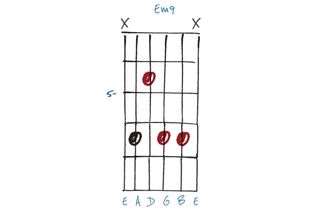
(Image credit: Future)
If we took an Em-A7-D (II-V-I) progression and decided to jazz it up with 7ths and extensions, we might well start with this Em9 chord. The F# (9th) is our highest note. I mention this because the F# will be the highest note of one of our other examples, too.
Example 2. Eb9
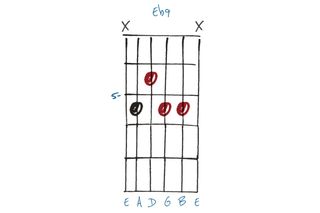
(Image credit: Future)
As the V chord, the A is the most likely candidate in our sights for substitution. Let’s make it a dominant 7th, then shift it up a tritone (#4/b5) to give us Eb7. Then let’s go even further and make it a Eb9. Now we’re ready for the I chord.
Example 3. Dmaj9
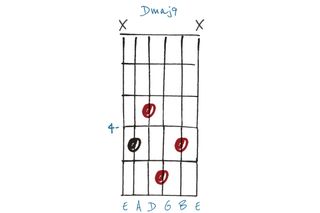
(Image credit: Future)
The I of our II-V-I (D) sounds a bit plain after all that, so I’m opting to make it a Dmaj9. This voicing with the E (9th) on top gives a chromatic run down in parallel with the bass, which sounds harmonically linear and pleasing – though, as always, it’s a personal choice
Example 4. Eb7#9
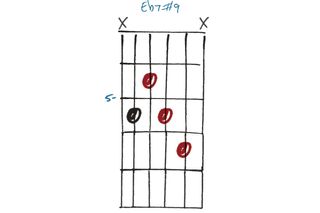
(Image credit: Future)
Now we’ve heard the ‘deluxe’ version of the II-V-I, let’s have a play with some alterations. How about this Eb7#9 in place of the Eb9? It keeps the F# from our Em9 as the highest note, which gives a nice continuity as the other voices shift. Follow with a Dmaj7 with the F# on top and you have a matching set!
Example 5. Ebmaj7
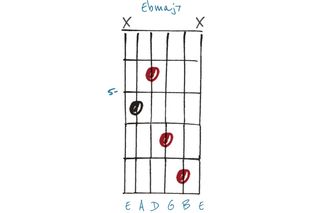
(Image credit: Future)
This final example goes slightly outside the theoretical definition of a tritone substitute by being a major 7th rather than dominant 7th, but I don’t think we should let that bother us as it sounds great! This Ebmaj7 fits beautifully if you finish by playing the same chord down one semitone/fret to finish on Dmaj7.

Thank you for reading 5 articles this month**
Join now for unlimited access
US pricing $3.99 per month or $39.00 per year
UK pricing £2.99 per month or £29.00 per year
Europe pricing €3.49 per month or €34.00 per year
*Read 5 free articles per month without a subscription
All the latest guitar news, interviews, lessons, reviews, deals and more, direct to your inbox!
>>> Read full article>>>
Copyright for syndicated content belongs to the linked Source : GuitarWorld – https://www.guitarworld.com/lessons/how-to-use-tritone-substitutions-in-chord-progressions





































